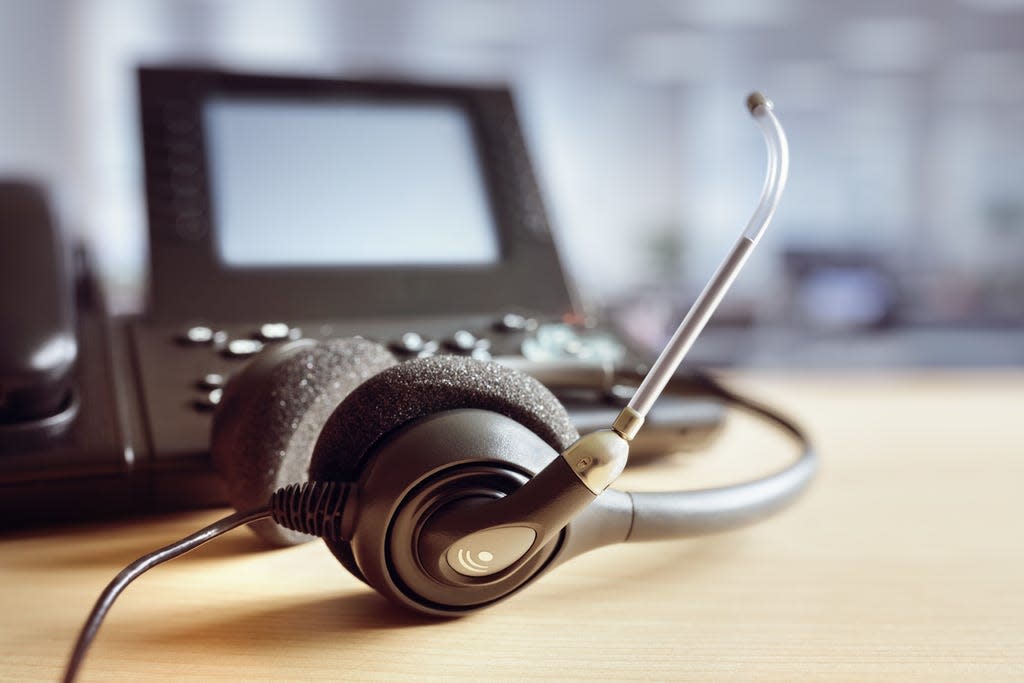988 suicide prevention hotline is set to launch nationally. Are Ohio and Kentucky ready?

Since 2005, the National Suicide Prevention Lifeline has taken more than 2 million calls per year, routing individuals facing a suicidal crisis or emotional distress to necessary lifesaving resources via phone call or text.
But suicide rates have increased dramatically over the past 20 years across the United States, including in Kentucky and Ohio. So the lifeline is undergoing a major change that experts hope will help reach more people in need.
On Saturday, the lifeline will officially morph into a three-digit call and text hotline that will continue the work of assisting struggling individuals during their time of need, connecting them to lifesaving community behavioral health treatment and social service resources.
After the shift, individuals struggling with suicidal thoughts or dealing with mental health issues can dial or text 988 – a number meant to become as widely recognized as 911, the three-digit number used to connect people to law enforcement during emergency situations.
More: 988 becomes the new 3-digit suicide prevention hotline on July 16: What to know
More: Our mental health crisis is getting worse. New 988 suicide hotline can be our fresh start.
Experts anticipate the shortened dial and text line will increase access and become more well-known. Like 911, the line will track the location of the caller in order to reach response teams in the area. But critics worry the country's crisis response infrastructure isn't currently equipped to handle an increase in calls as nationwide staffing shortages persist.
A Wall Street Journal review released Monday found that 1 in 6 calls to the current lifeline end without the caller reaching a counselor.
Only 21 states have enacted legislation to fund and fully implement 988. The lack of preparation caused Health and Human Services Secretary Xavier Becerra to sound the alarm earlier this month, telling reporters that a significant number of states were far behind the curve in preparations.
“988 isn’t just a number, it’s a message,” Becerra said. “It’s the signal to America that we want to consolidate that service, we want to strengthen that service and we want to make it consistent. We won’t have the luxury of decades like 911 had to get on the ground and running.”
Saturday's launch will be considered a "soft" one by many states including Kentucky and Ohio. But while all states are dealing with challenges in implementing the new line, experts say Kentucky and Ohio are better prepared than many other states.

Ohio is well equipped to handle the rollout, says Luke Russell, executive director of Ohio's chapter of the National Alliance on Mental Illness. But with any new service, there are questions about how efficient it will run.
"Every state is in the same boat here," Russell said. "...Is the capacity there to take the calls? Probably yes. The question is, if I live in Columbus and I call and hopefully get a Columbus person, will they have the expertise, the understanding, and resources to then refer me to somebody in Franklin County?"
Earlier this month, the alliance released a poll that found more than three-quarters of American adults (77%) have never heard of the 988 service, which was previously a 10-digit number (800-273-8255) which will remain active even after the 988 launch. He hopes that the official launch will spark a more aggressive advertising campaign to spread awareness and move the needle toward becoming a nationally recognized number like 911, as was intended.
"They haven't promoted the number because it's not live," he said. "...But for someone to remember an 800 number, I bet three-fourths of the people don't know that. So I'd like to see this done again in two years to see where we're at."
Preparations in the Buckeye State
Dr. Brian Hepburn, executive director of the National Association of State Mental Health Program Directors, said despite rollout challenges, Ohio is "one of the leaders" in 988 preparations.
"In terms of good examples, I would put Ohio in there," he said.
Nationally there will be 200 call centers set up. In Ohio, each county is linked to one of 19 call centers. If someone isn't reached at that call center, a backup center in a different county is set up to take that call. If the backup center isn't reached, then Cincinnati's Talbert House is designated as the backup call center for the entire state.
Alex Rulon, director of community care for the Talbert House, said the center recently grew its call center staff to 40 full-time employees. The Talbert House gets anywhere from 750-800 calls per month currently. Rulon expects that number to grow by 30% initially with the launch of 988.
"We've done a really nice job with increasing our staffing," Rulon said about preparations.
While 988 has around $280 million of initial federal funding at its backing, each state legislature has worked individually to map out long-term funding plans.
Lori Criss, director of Ohio's department of mental health and addiction services, said her department has dedicated roughly $20 million to start-up costs through June 30, 2023. and is working with the Ohio General Assembly on legislation to develop a long-term plan for funding.
"We're working with the General Assembly now … so communities can have confidence and reliance on (988) sustainability over time," she said.

Akron-based Portage Path Behavioral Health will provide primary coverage for Summit and Lake Counties and serve as a backup center for several other counties: Holmes, Tuscarawas, Stark, Carroll and Wayne.
Amanda Marunich, the center's psychiatric emergency services coordinator, said the shortened number will be "very positive for the community."
“It makes the services provided by the National Suicide Prevention Lifeline more accessible to those in need because the number is easier to remember and faster to dial," she said. "...We believe we will be able to reach more individuals in need by offering additional ways to connect to services and support.”
Coleman Professional Services handles lifeline calls for Canton and the surrounding area.
Michelle Smith, Coleman's chief officer for crisis services, said they generally see between 200 and 250 calls to their lifelines per month, though in the last two to three months that number has risen over 300.
Coleman has been shoring up staffing ahead of the 988 transition. In March, Smith told the Columbus Dispatch the agency had staff equal to eight full-time employees. Since then, she said, they’ve been able to hire an additional five people and are hoping to eventually bring the staff up to 20 employees to meet the needs of the community.
“With COVID, we saw our numbers for urgent calls increase. People were just more intense, they were feeling suicidal more, so we saw those numbers increase,” Smith said. “And I think anytime there's like news media or things regarding politics or events in the country, we definitely see more calls about anxiety and worry and things like that.”
The state also hired Doug Jackson in June as the administrator of the 988 line. Jackson is the former deputy director of the Ohio Treasurer's office and is a former superintendent with the Ohio Department of Developmental Disabilities.
“The three-digit 988 lifeline is perhaps the largest step in providing frontline access to behavioral health in the history of services to people experiencing thoughts of suicide or a mental health crisis," Jackson said in a statement. "Calling 911 for a fire truck to respond to a fire is normal. The 988 number is allowing those in need of access to other types of life-saving supports to be normal."
Ohio's House of Representatives approved a bill in May to establish a way to pay for the 988 crisis line, which has been introduced to the Senate.
Preparations in the Bluegrass State
In Kentucky, the General Assembly approved House Bill 988, which provides funding and establishes conditions for 988.
In addition to funding approved by the legislature, Kentucky received a grant from Vibrant emotional health for $340,000 to assist with planning 988 logistics. Gov. Andy Beshear praised the grant and the state's efforts to prep for 988.
“Every Kentuckian has a right to compassionate, high-quality and immediate mental health care, including crisis response,” the governor said in a news release.
This article originally appeared on Cincinnati Enquirer: Ohio, Kentucky prepare for National Suicide Prevention Lifeline launch

